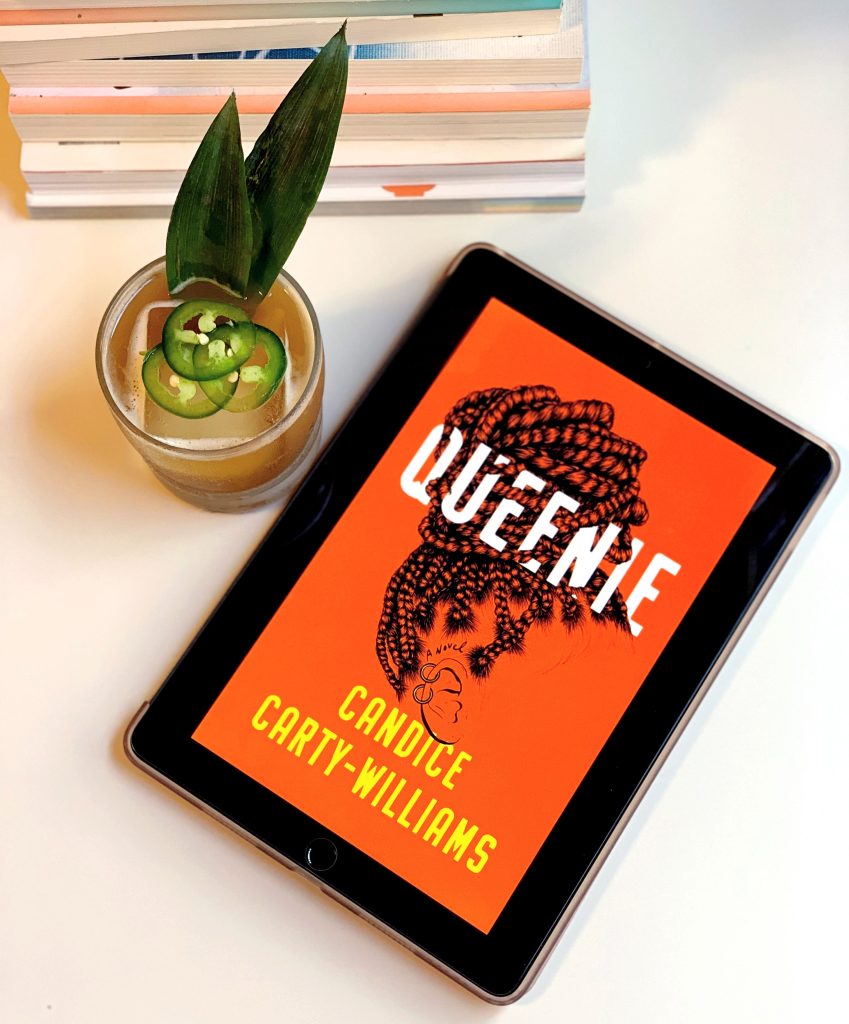
📖: Candice Carty-Williams’ Queenie (2019)
🍸: royal
Why this book?
Queenie’s story opens at a very awkward moment, which made me curious to read more about her right away. She’s at her gynecology appointment, texting her ex-boyfriend, when she finds out that she had a miscarriage. Feeling unmoored by her breakup, Queenie recounts the history of her relationship with her white ex, trying to figure out why they didn’t work out. Was it his inability to understand her? Was it her inability to open up to him? How much of it was due to the unresolved tensions of their interracial relationship? The book can be witty and humorous, but Queenie’s narrative is also deeply vulnerable as she struggles to start over again and take care of herself after her breakup, while living as a black woman in Britain.
Queenie’s story presents a perspective on what it’s like to live in the modern world as a woman of color, asking us to consider the challenges that arise at the intersection of race and gender. How do we deal with the effects of racism, misogyny, familial expectations, and mental health issues that accumulate when living in a predominantly white society? How do we navigate an interracial relationship? How do we find the courage and strength to choose ourselves first when we may not often be conditioned to do so?
Why this drink?
Interesting fact: Did you know that the pineapple used to be a symbol for luxury and power? In mid-17th century Europe, only royalty could afford buying a pineapple since they were extremely expensive to import from South America and difficult to cultivate in Europe. With that in mind, I chose to include pineapple in the drink to honor the queen that Queenie is.

royal
ingredients:
1.5 oz dark spiced rum
4 oz pineapple juice
1 oz lime juice
pinch of ground cinnamon
*for garnish: jalapeno slices, pineapple fronds and/or pineapple fruit
- combine all ingredients in a shaker with ice and shake well
- serve with large ice cube
- garnish with jalapeno slices and pineapple fronds/fruit
Recipe inspired by Boulder Locavore’s The Spicy Maiden Cocktail
Another round, please! 🥂
You might also like:
Chimamanda Ngozi Adichie’s Americanah (2013)
Let’s discuss!
Finished the book? What did you think about it? Share your thoughts in the comments section below!








